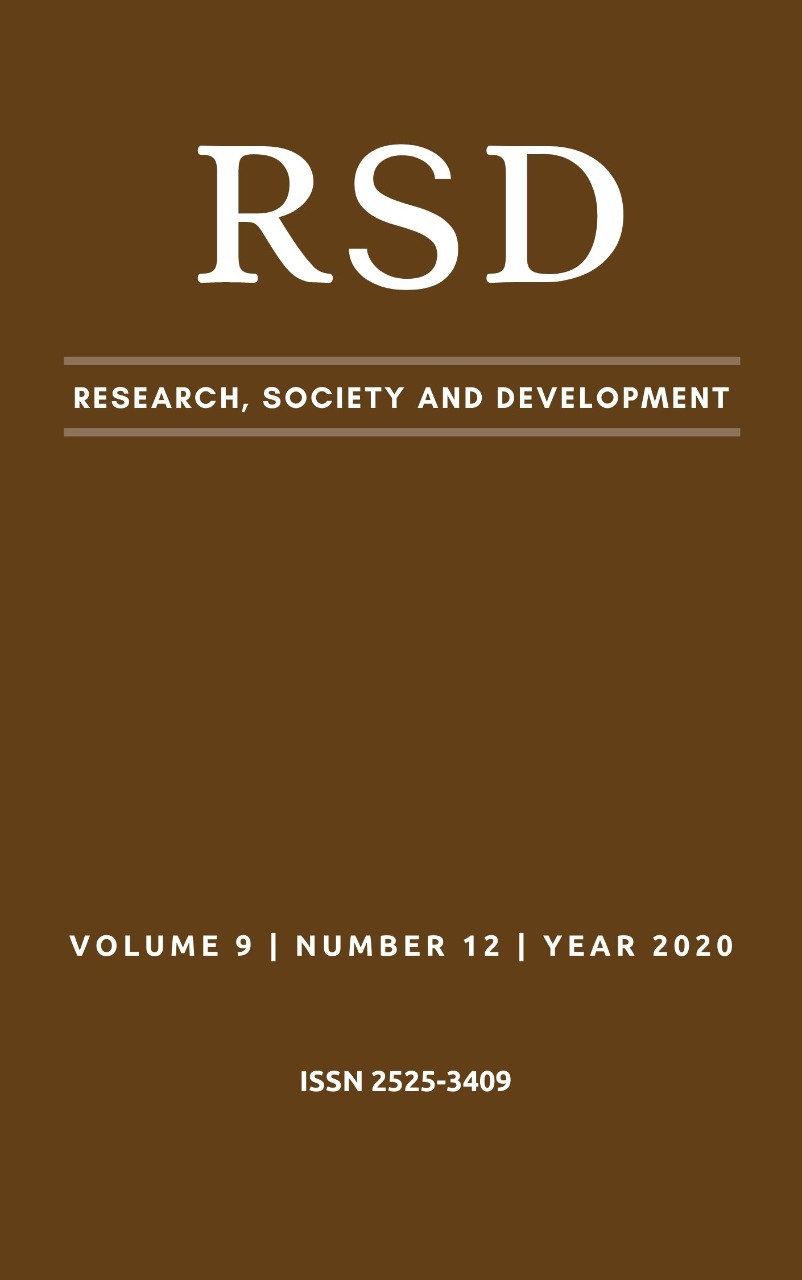Rockfall index and geological-geotechnical characterization on road slopes: a case study on BR-262
DOI:
https://doi.org/10.33448/rsd-v9i12.10968Keywords:
Rockfall; Hazard analysis; Geological-geotechnical characterization; BR-262.Abstract
The geological-geotechnical characterization of slopes on highways is important for the safety of the road, as these studies make it possible to develop prevention and warning programs and the implementation of works to reduce hazard in these undertakings. Thus, this paper aimed at the geological-geotechnical characterization and assessment of the hazard of rockfall from the slopes located on the BR-262 highway, between Betim and Nova Serrana, in Minas Gerais. Regarding the classification of rock mass, the RMR, Q-System and GSI systems were applied. Subsequently, kinematic analysis, stability analysis were carried out and finally slopes were ranked according to the danger of falling blocks. In none of the slopes the RMR was lower than the regular one. The results of the other classifications were in agreement with the RMR. Safety factors indicated that the slopes are stable. The slope with the highest degree of danger was the P4 - A slope and the one with the least danger was the PM1 slope.
References
Almeida, F. F. M. (1977). O cráton de São Francisco. Revista Brás. Geoci. São Paulo, 7(1), 349 -364.
Barton, N. & Bandis, S. (1982). Effect of block size on the shear behavior of jointed rocks. Proceedings - Symposium on Rock Mechanics. 739-760.
Bieniawski, Z. T. (1989). Engineering rock mass classifications: a complete manual for engineers and geologists in mining, civil, and petroleum engineering. John Wiley & Sons, New York, 251. pp.
Budetta, P. (2004). Assessment of rockfall risk along roads. Natural Hazard and Earth System Sciences 4: 71-81.
Divinópolis. (2018). Câmara Municipal de Divinópolis. Sobre Divinópolis. Geografia. Recuperado de: <https://www.divinopolis.mg.leg.br/sobre-divinopolis/geografia>Acesso em: 25/10/2019.
DNIT - Departamento Nacional de Infra-estrutura de Transportes. (2014). Recuperado de: <http://servicos.dnit.gov.br/dadospnct/ContagemContinua>.
Gomes, G. J. C. & Sobreira, F. G. (2013). Avaliação do Perigo de Queda de Blocos em Rodovias - Rockfall Evaluation in Highways. Anuário do Instituto de Geociências (UFRJ. Impresso), 35(2), 14-27.
Hoek, E. & Brown, E. (1997). Practical estimates of rock mass strength. International Journal Of Rock Mechanics And Mining Sciences, 34(8), 1165-1186.
ISRM - International Society for Rock Mechanics. (1981). Rock Characterization, Testing and Monitoring – ISRM Suggested methods, Pergamon Press, Oxford, E.T. Brown (ed), p. 211.
Pereira A. S. et al. (2018). Metodologia da pesquisa científica. [e-book]. Santa Maria. Ed. UAB/NTE/UFSM.
Pierson, L. A., Davis, S. A. & Van Vickle, R. (1990). Rockfall Hazard Rating System – Implementation Manual, Federal Highway Administration (FHWA), Report FHWA-OR-EG-90-01, FHWA, U.S. Dep. of Transp.
Ritchie, A. M. (1963). Evaluation of rockfall and its control. U.S. Department of Commerce, Bureau of Public Roads, and the Washington State Highway Commission.
Rocscience. (2019). Dips versão 7.016. Rocscience, Toronto, Ontario, Canada.
Rocscience. (2019). Rocplane versão 4.001. Rocscience, Toronto, Ontario, Canada.
Rocscience. (2019). RocTopple versão 2.001. Rocscience, Toronto, Ontario, Canada.
Rocscience. (2019). Swedge versão 7.001. Rocscience, Toronto, Ontario, Canada.
Romano, A. W. (2007). Nota Explicativa da Folha Pará de Minas (SE. 23-Z-C-IV). Programa Geologia do Brasil: CPRM - Serviço Geológico do Brasil, v. 5. Edição 1.
Santos, A. E. M. et al. (2018). Caracterização geológica-geotécnica de maciços rochosos marginais à BR-262. In: VIII Simpósio Brasileiro de Mecânica das Rochas - SBMR 2018.
Downloads
Published
How to Cite
Issue
Section
License
Copyright (c) 2020 Allan Erlikhman Medeiros Santos; Denise de Fátima Santos da Silva; Guilherme Alzamora Mendonça; Thayna Valeriano Santos; Rafaella Resende Amaral; Laura Adriele Moura Silva

This work is licensed under a Creative Commons Attribution 4.0 International License.
Authors who publish with this journal agree to the following terms:
1) Authors retain copyright and grant the journal right of first publication with the work simultaneously licensed under a Creative Commons Attribution License that allows others to share the work with an acknowledgement of the work's authorship and initial publication in this journal.
2) Authors are able to enter into separate, additional contractual arrangements for the non-exclusive distribution of the journal's published version of the work (e.g., post it to an institutional repository or publish it in a book), with an acknowledgement of its initial publication in this journal.
3) Authors are permitted and encouraged to post their work online (e.g., in institutional repositories or on their website) prior to and during the submission process, as it can lead to productive exchanges, as well as earlier and greater citation of published work.

